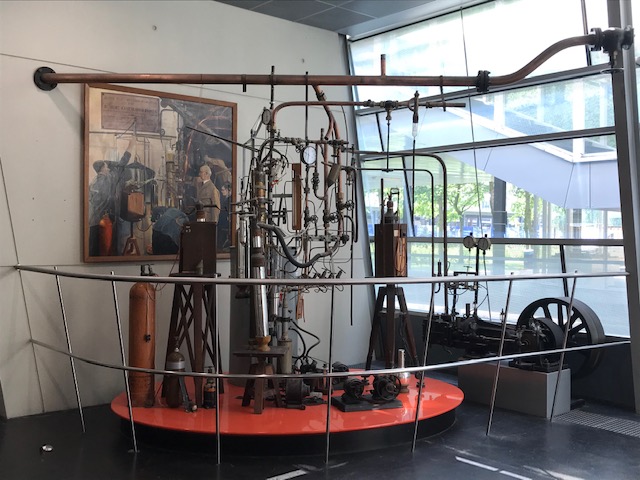Since my last blog post, I’ve been dedicating my time to learn all the ins and outs of SURFRESIDE3. As I jokingly said to my daily supervisor at the end of the first week in the lab, “I feel like my brain is now twice the size it was five days ago”—and I mean that in the most positive, Seuss-esque possible way. I have also been seizing opportunities to explore the different facilities at the University, which are filled with historical value.
The laboratory astrochemistry field is dedicated to studying the chemistry of space by recreating its conditions in the lab. This usually involves achieving very low pressures (around 10-9 mbar or 1012 times below atmospheric pressure), and temperatures. Interstellar dark clouds are typically at around 10 K, or approximately -260 °C, so low that we need cryogenic techniques to reach them. At SURFRESIDE3, we achieve that with a closed-cycle Helium cryocooler, which only rarely requires refilling with He gas. However, some experiments involve additional apparatus that also need to be routinely cooled down.
Coincidently this week, we ran out of liquid N2 in the lab, which resulted in the coolest (pun absolutely intended) visit to the Cryogenics Department at Leiden to refill our tank. On the way there, we made a stop at the display of the first system that succeeded in liquefying He, developed by Dr. Heike Onnes in his lab at Leiden University in the beginning of the 20th century. I wonder if Alfie has visited some interesting facilities too!

Replica of the apparatus Onnes used to liquify Helium for the first time. It yielded a sardonic final amount of about one tea cup of liquid He.
It feels good to be back in a lab, conducting experiments and exploring the idiosyncratic ways chemistry works at such extreme conditions as one finds in interstellar clouds.

Great article Julia! Also now I finally know what that machine at the building lobby does